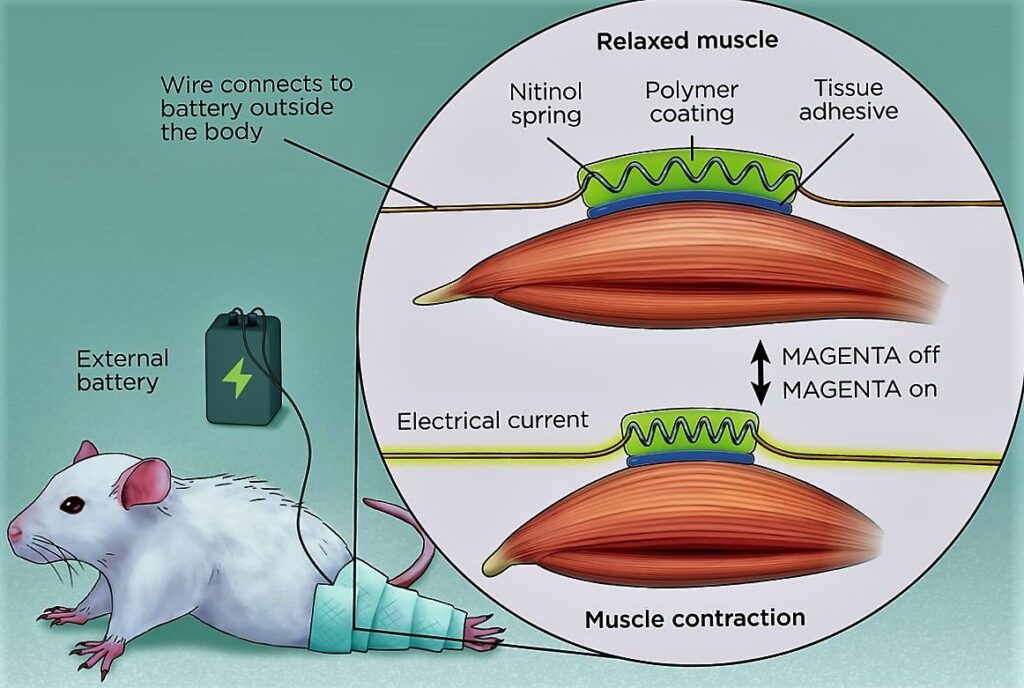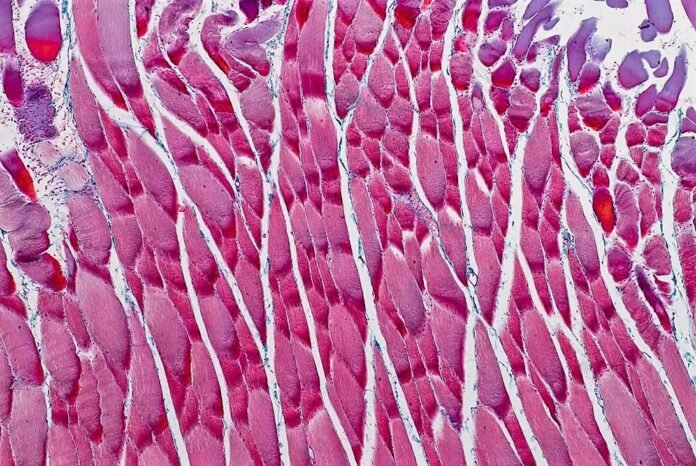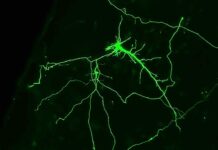A Glimpse into the Ingenious Contraption
In the hallowed halls of Harvard, a group of ingenious researchers have conjured up a device dubbed MAGENTA, an acronym for Mechanically Active Gel-Elastomer-Nitinol Tissue Adhesive. This implantable marvel combats muscle wasting in mice with remarkable efficacy. Nestled within a pliable plastic container lies a spring forged from nitinol, a shape-memory alloy with a penchant for contracting when exposed to a particular temperature. The device latches onto muscle tissue courtesy of a biocompatible adhesive.
The Subtleties of Its Function
Embedded in a surgical manner, the device springs into action at the behest of an external battery. Intermittent discharges of electrical currents orchestrate short bouts of contraction and relaxation. As the nitinol-based metal warms, it shrinks, compelling the muscle to follow suit. Cessation of the electrical current allows the spring to elongate, granting reprieve to the muscle fibers.
Revelations from Scientific Inquiry
Upon examination in a mouse’s hind leg, the device exerted a force akin to that encountered during exercise. Mice, immobilized by casts on their hind legs for a fortnight, exhibited negligible wasting when treated with MAGENTA, despite their legs’ immobility. Intriguingly, tissue analysis divulged that the device stimulates the same biochemical pathways as movement, thereby fostering the protein synthesis required to preserve muscle.
Prospects and Hurdles
MAGENTA’s potential to mitigate atrophy in patients rendered inactive, such as those in intensive care, has elicited excitement from experts. However, the necessity for surgery may deter some. The researchers aspire to enhance laser activation to eschew wires and cumbersome apparatuses, as well as enlarge the device to accommodate human musculature. Alas, an increase in size translates to greater heat production, which must be mitigated to prevent muscle tissue damage.
Insights from the Learned

Subramanian Sundaram, a bioengineer from Harvard, lauds the device as an inventive solution to a “pressing clinical conundrum” through the amalgamation of existing materials. Nevertheless, he highlights the surgery prerequisite as a potential drawback. Robotics engineer Jonathan Rossiter of the University of Bristol echoes concerns regarding the management of heat output for larger devices.
Stem cell biologist Fabrisia Ambrosio, unaffiliated with the study, extols MAGENTA as an “exhilarating leap forward” for treating patients incapable of physical activity. She underscores that muscle atrophy can besiege intensive care patients in a mere 24 hours.
A Final Word
The implantable MAGENTA, a brainchild of Harvard researchers, demonstrates immense promise in staving off muscle wasting in mice by mimicking muscle contractions and activating biochemical pathways akin to movement. The surgical procedure may pose a challenge, but the device’s potential to treat atrophy in inactive patients remains significant. As the team endeavors to refine the device’s laser activation and adapt it for human use, the future of muscle atrophy prevention shines brightly.
Google News | Telegram
















